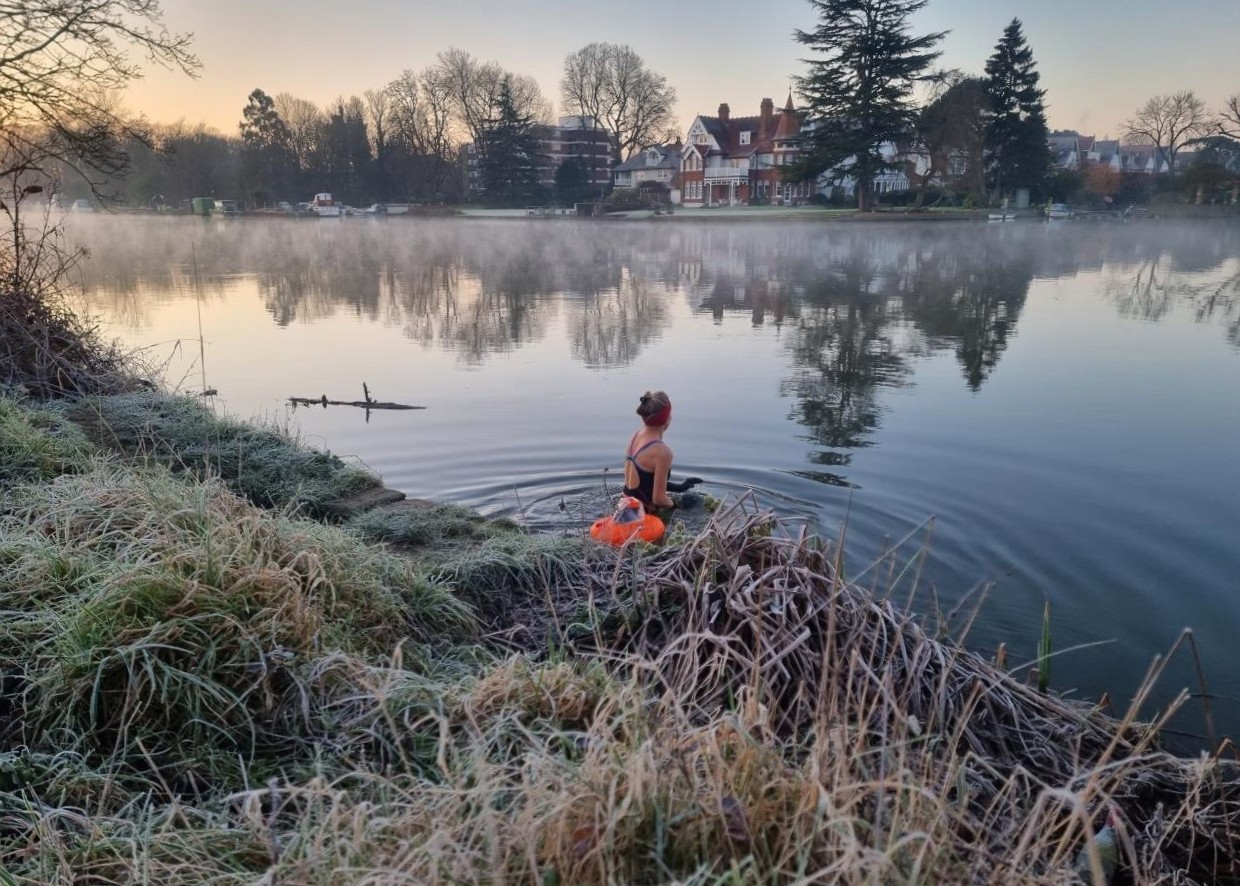Cold water swimming offers fun and lots of benefits, but the environment is potentially deadly. Learn when to step away.
We’re currently running a winter swimming course at Outdoor Swimmer, and it’s been a good refresher for me on both the benefits and risks of plunging into cold water.
I’m a late convert to winter swimming. It’s only in the last few years that I’ve learned to understand its attractions.
There was a time when I viewed swimming primarily through the lens of fitness and performance. The idea of plunging into cold water for a few minutes seemed pointless – and definitely not worth the effort involved.
But now I value how it brings me close to nature at a time of year when I would previously have huddled inside, and it’s enhanced my appreciation of the changing seasons.
Moreover, swimming outside through winter has boosted my confidence in all types of swimming and increased my cold water tolerance.
Always a barrier
Like many winter swimmers, I feel resistance to every cold plunge. I know I will have to go through discomfort – and sometimes pain – to reach the point when it feels good. Part of the benefit of cold water swimming comes from overcoming this resistance and subjecting our bodies to controlled stress. But the barriers are in place for a good reason: cold water is a hostile environment for humans.
With so many people now swimming outside through winter, it’s easy to overlook just how dangerous cold water can be.
Don’t get steamrollered
Cold water swimming shares something in common with investment strategies described as collecting dimes in front of a steamroller. The rewards are real and easy to access – but only if you know when to step away. Stay too long, and the consequences can be severe.
To avoid getting steamrollered, it’s essential to understand the key risks:
- Cold water shock – the immediate automatic response to cold water immersion
- Swim failure – the gradual loss of strength as your muscles cool down
- Non-freezing cold injury – damage to your extremities such as chilblains
- Hypothermia – a dangerous drop in your core body temperature
- Afterdrop – The continued cooling of your body after you exit the water which can take you into hypothermia.
You’ll find more detail on these in my book Swim Wild & Free or through Renaissance Swimmer.
Embrace the cold, cautiously
The Renaissance Swimmer ideal is to embrace a wide a range of swimming activities as possible, including those in cold water. Doing so will enhance your life and your swimming. But do make sure you understand what you are doing, how to manage the risks, and how to avoid being flattened.

